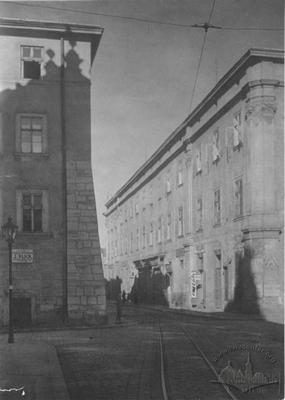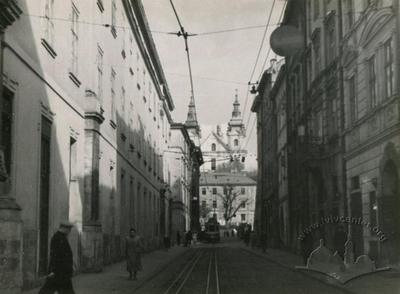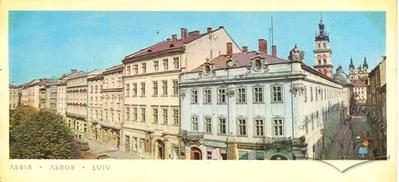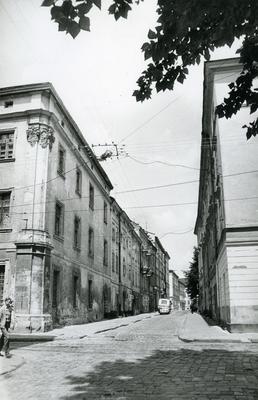Pl. Rynok, 10 – former Lubomirski Palace/ Prosvita building ID: 138
Lubomirski Palace (presently a branch of Lviv Ethnography and Crafts Museum of the National Academy of Sciences of Ukraine) is an example of the architecture of the Baroque magnate palace incorporated in the contruction complex of the late medieval and early Modern periods. It was constructed in the seventeenth century, significantly rebuilt in and refinished over the course of 1744-1763 (by the architects Jan de Witte, Bernard Meretyn and Marcin Urbanik, and by the sculptors Sebastian Fesinger and Stefan Kodecki).
Architecture
The building is located on a corner plot of Rynok Square. Its side façade faces Ruska Street and its rear façade is on Fedorova Street. It is elongated from west to east. In the seventeenth century the building was erected on the site of five old houses over the Gothic foundations and pubs. In the eighteenth century it was significantly reconstructed.
This plastered brick building has three floors topped off with an attic. The front façade is segmented with pilasters; the first floor and the attic are separated with wide cornices. The portals of the main and rear (1695) facades have semicircular tops. The windows have relief moldings. The attic and the corner of the building are adorned with decorative sculpture depicting armor and military symbolic. The pilasters are crowned with Baroque capitals. Stucco fireplaces (by the sculptor Jan Obrocki) are set up in the interior.
People
Organizations
Sources
- The entry was developed within the project "Galiciana", 2001-2002












